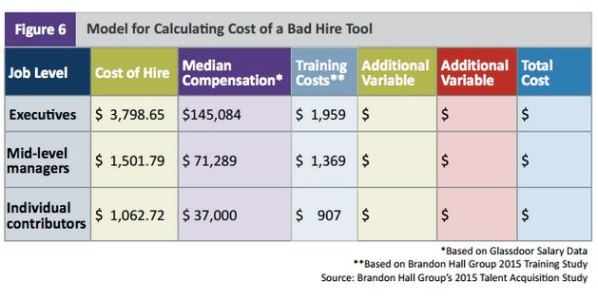The Employer’s Role in Mental Health Care
Howard Mavity, Risk Management
“The Germanwings crash demonstrated that employers need to act, but they must approach the problem on several levels. If employers only ramp up their scrutiny of employees, they will make employees even more reluctant to get assistance, so it is critical to begin by educating employees and encouraging them to seek help. A company wellness program, for example, can be used to develop effective messages about depression and other illnesses in the workplace. Then, companies must provide specific management training to accompany increased employer involvement.”
Preparing for the “silver tsunami”
Dave Imbrogno, SmartBlog on Leadership
“…the “silver tsunami” — that wave of maturing associates either preparing to exit the workforce or making the decision to extend their careers.”
“When it comes to an aging workforce, the majority of organizations are unprepared for their workers to retire or for workers who plan to stay past typical retirement age. Very few organizations have implemented specific policies and management practices to deal with the fluctuations that the silver tsunami will cause, leaving the majority of companies at risk of losing decades of knowledge and expertise, failing to continue to develop the workers who remain or unable to recruit more mature employees.”
Why Managers Are More Likely to Be Depressed
Dave Burkas, Harvard Business Review
“According to a new study, middle managers are the most likely people in an organization to suffer from depression. The study, led by Seth Prins, a doctoral student at Columbia University’s Mailman School of Public Health, was recently published online in Sociology of Health & Illness. The researchers examined more than 20,000 full-time workers across a variety of roles. For their sample, they utilized 2001-2002 National Epidemiologic Survey of Alcohol and Related Conditions (NESRAC), and narrowed that down to a set of 21,859 full-time employees. The researchers then segmented those individuals into four categories: owners, managers, supervisors, and workers.”
Mental Health Matters: 8 Stigmatizing Phrases to Stop Using
GoodTherapy.org
“The stigma surrounding mental health issues can be a significant barrier to care. Unfortunately, many people unknowingly contribute to the stigma simply with their everyday language choices. A poor choice of words not only stigmatizes, stereotypes, and creates unrealistic assumptions about certain people, but also can trivialize serious mental health conditions and their accompanying experiences.”
The Challenges Of Identifying Potential Workplace Violence
Yuki Noguchi, NPR
“In recent years, more employers are posting workplace violence policies, says Elizabeth Bille, associate general counsel for the Society for Human Resource Management. She says they should enforce them uniformly without giving first-time offenders a pass.
At the same time, Bille says, if an employee has a mental health problem, employers are limited by federal law in their ability to discuss or share that information.
“I think one of the greatest challenges about identifying potential workplace violence is trying to balance fairness to the employee to not overreact and keeping their particular situations confidential, with the very real concerns of co-workers who may start fearing for their safety,” she says. “That is really the crux of the challenge here.”
Healthcare workplace violence efforts should be improved
Nina Flanagan, HealthcareDive
“The ANA [American Nurses Association] recently mentioned their ongoing health risk appraisal in the paper. Preliminary findings showed of 3,765 RNs and student nurses questioned about workplace safety, 43% reported they had been threatened by a patient or family member, and 24% said they had been physically assaulted. However, Dawson said many events go unreported as violence is often accepted as part of the job. “We’re working very hard to get the message out that it isn’t part of the job and violence can no longer be tolerated.”
How to Reinvent the Employee Handbook
Suzanne Lucas, Cornerstone Blog
Every business needs an employee handbook, right? This contains all those fun legal things like the fact that you’re an at-will employee, that you need to comply with a code of conduct, and what the dress code is (among other things). So, it’s a really, really important document. Except that maybe that’s not true. Linda Itskovitz, VP of marketing for employee communications company GuideSpark, says the handbook is a very unimportant document.
Why? Because no one actually reads it. “The employee handbook, as a medium, is not important because the majority of employees never open their handbook in the first place, especially millennials,” Itskovitz says.
The True Cost of a Bad Hire
Glassdoor Survey
“Most companies underestimate the cost of a bad hire, when in actuality, a bad hire can impact an organization in a variety of ways. For example, Zappos found it was spending $100 million on bad hires and now offers employees a $3,000 separation bonus to exit the organization if they are unhappy within the first few months.”
Quick Takes
- You saw this coming: New ACA forms and instructions from the IRS
- The ACA: Know your number
- Parental Leave in the Workplace Jungle
- What are biggest legal questions facing employers?
- Dos and Don’ts for Dealing with a Disillusioned Direct Report
- Playfulness at Work: How to Inspire Innovation
- Preventing suicide? Some Boston docs offer ideas
- ‘Why We Work’ author: Drop employee bonuses, emphasize meaning
- Do’s and Don’ts of an OSHA Inspection
- Safety App designed for use by employees who work alone
- Understanding Cyberrisks From Insider Threats
- Don’t wait: communicate – National Preparedness Month – Sept 30 is Prepareathon
- 9 steps to a perfect apology
- Gmail Extension Now Lets You Track Attachment Openings

